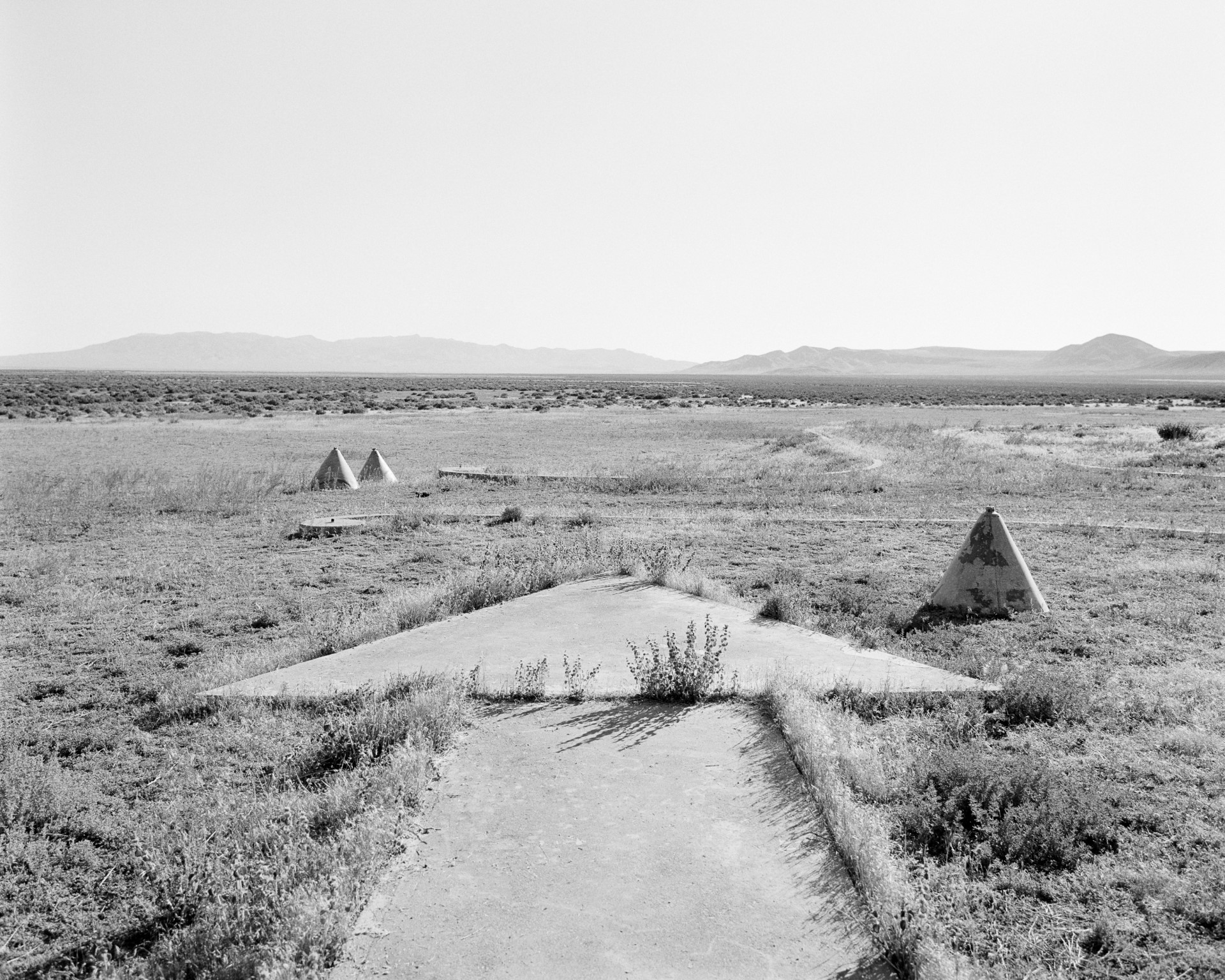Download catalogue essay by Hannah Ferguson
Keep Direction By Good Methods
In an age before electronic navigation, pilots were at the will of the sky. By day, they followed fixed geographical features below such as roads, railways, and rivers; however, come nightfall, planes were to be grounded, rendering them subordinate to the round-the-clock reliability of trains. If a pilot could not see, a pilot could not fly.
Keep Direction By Good Methods follows the physical remains of the American transcontinental lighted airway system, which sought to visually guide pilots across the country through night’s darkness, making possible a burgeoning aviation industry. Beginning in 1923, regularly positioned lighted towers were erected from coast to coast allowing pilots to navigate from point to point along set routes.
Now, nearly a century later, while few of these beacons still stand, their often-arrow-shaped concrete foundations, shown here, dot the United States, alluding to a technological landscape of days gone by. These sites helped to change the relative scale of America, compressing a landscape that by train took upwards of three days to traverse into a journey by plane of a single day. But as flight evolved no longer were, they necessary; no more are flight and navigation dependent upon sight. Entropically, the foundations are fading back into the landscape they helped to redefine.
About the Artist
Chris M. Forsyth is a visual artist working in photography. His research-based projects combine themes of history and human geography to examine landscape as a cultural archive. Working within a documentary mode, his photographs explore the complex and overlapping ways in which we have come to define and redefine place.

